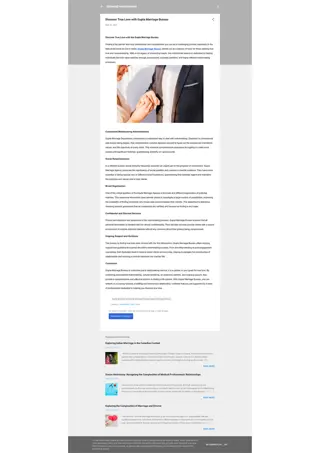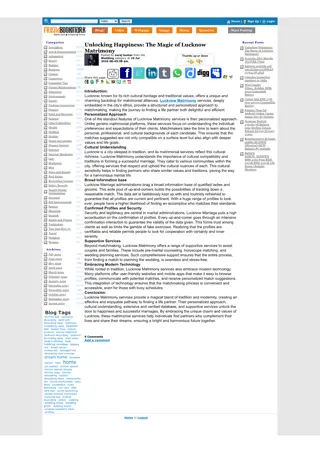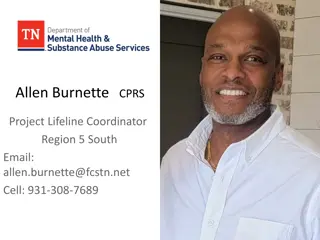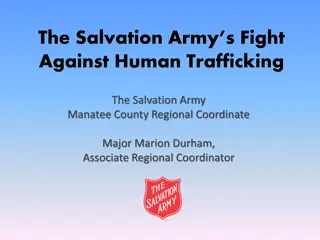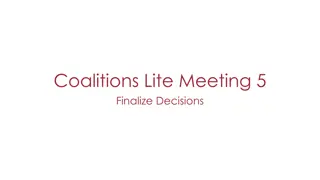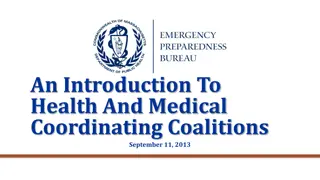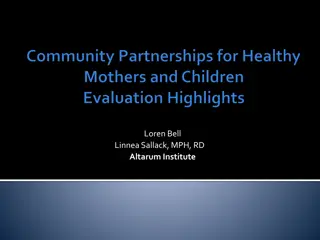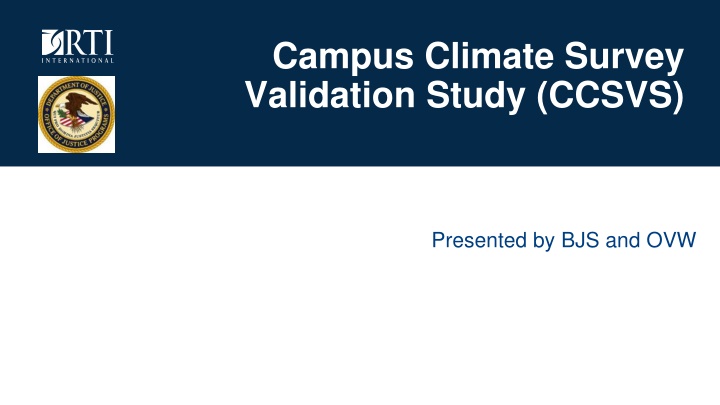
Campus Climate Survey Validation Study: Understanding Sexual Harassment and Assault
The Campus Climate Survey Validation Study (CCSVS) aimed to develop a survey instrument to collect data on sexual harassment, assault, and campus climate across 9 diverse schools. The study involved creating a valid and reliable survey, administering it to undergraduate students, and analyzing responses to ensure data quality and representativeness. Through careful methodology and engagement with stakeholders, the study successfully achieved high response rates and provided valuable insights into the prevalence of sexual victimization on college campuses.
Download Presentation

Please find below an Image/Link to download the presentation.
The content on the website is provided AS IS for your information and personal use only. It may not be sold, licensed, or shared on other websites without obtaining consent from the author. If you encounter any issues during the download, it is possible that the publisher has removed the file from their server.
You are allowed to download the files provided on this website for personal or commercial use, subject to the condition that they are used lawfully. All files are the property of their respective owners.
The content on the website is provided AS IS for your information and personal use only. It may not be sold, licensed, or shared on other websites without obtaining consent from the author.
E N D
Presentation Transcript
Campus Climate Survey Validation Study (CCSVS) Presented by BJS and OVW
CCSVS Background Purpose: Develop and test a survey instrument and methodology for collecting valid and reliable data on sexual harassment, sexual assault, and campus climate 9 schools agreed to participate Variation in terms of size, public vs. private status, 2- vs. 4-year status, and geography Survey administered to undergraduate males and females at the 9 schools Following the survey, respondents were provided with a list of support resources customized to each school ~15% checked out these resources 2
CCSVS Research Goals and Methodology 1. Develop a valid and reliable instrument to collect data about sexual victimization experiences and the campus climate related to sexual victimization. Approach Used the WH Task Force Toolkit as a starting point Held listening sessions with stakeholders Conducted cognitive testing to understand how well questions work and are understood by students Included items to enable validity checks and latent class analysis 3
CCSVS Research Goals and Methodology - Instrument Final CCSVS Instrument: College Experiences Survey (CES) Brief (~15 minutes), confidential, self-administered web survey Behaviorally-specific, 2-stage approach Asked about sexual harassment and coercion prior to asking about sexual assault Multiple reference periods since the beginning of the current (2014-2015) academic year (focus of most estimates) since entering college lifetime Incident-specific follow-up questions (up to 3 incidents) Broad array of campus climate measures 4
CCSVS Research Goals and Methodology Design and implement a data collection methodology that administers survey to a sample of students, achieves response rate and survey completion targets, and avoids nonresponse bias. Approach Administered between Spring break and start of finals Field period lasted ~57 days Use of incentives ($25 for most respondents) Survey could be taken on a range of devices About 23,000 respondents (15,000 females; 8,000 males) 5
CCSVS Research Goals and Methodology High Data Quality Response rates higher than anticipated (54% for females; 45% for males) Nonresponse bias analysis suggested that nonresponders were not significantly different from those who responded 80.0 70.0 60.0 50.0 Response Rate (%) 40.0 30.0 20.0 10.0 0.0 5 6 7 9 1 2 3 8 4 School Number Female Response Rate Female Average Male Response Rate Male Average 6
CCSVS Research Goals and Methodology Generate school-specific estimates of victimization and have the ability to compare findings across schools. Approach Used a standardized instrument and methodology across all 9 schools Weighting used to produce school-specific estimates Schools are not identified by name Standard errors and confidence intervals used to show significant differences 7
Sexual Victimization Estimates P2. the current academic year in [FILL: August/September], 2014? o 0 incidents [IF P2 = 0 IINCIDENTS, SKIP TO LCA2] o 1 incident o 2 incidents o 3 incidents o 4 incidents o 5 or more incidents How many separate incidents of unwanted sexual contact have you experienced since the beginning of 1 or more incidents of unwanted sexual contact since the beginning of the 2014-2015 academic =victim of completed sexual assault For each incident, a follow-up question is used to determine the type of sexual contact Incidents that included oral sex, anal sex, sexual intercourse (females only), or sexual penetration with a finger or object are classified as completed incidents of rape Incidents that included forced touching, but did not include penetration, are classified as completed incidents of sexual battery (excluding rape) 8
Sexual Assault, Rape, and Sexual Battery: Measurement This section asks about times when you may have experienced unwanted sexual contact. In these questions, unwanted sexual contact is sexual contact that you did not consent to and that you did not want to happen. Remember that sexual contact includes touching of your sexual body parts, oral sex, anal sex, sexual intercourse, and penetration of your [IF D3 NE MALE, FILL vagina or ] anus with a finger or object. Please check off each point as you read through these descriptions. Unwanted sexual contact could happen when: someone touches or grabs your sexual body parts (e.g., butt, crotch, or breasts); someone uses force against you, such as holding you down with his or her body weight, pinning your arms, hitting or kicking you; someone threatens to hurt you or someone close to you; or you are unable to provide consent because you are incapacitated, passed out, unconscious, blacked out, or asleep. This could happen after you voluntarily used alcohol or drugs, or after you were given a drug without your knowledge or consent. Please keep in mind that anyone regardless of gender can experience unwanted sexual contact. Also, the person who does this could be a stranger or someone you know, such as a friend, family member, or person you were dating or hanging out with. 9
CCSVS Prevalence Rates for Females - 2014-2015 Academic Year Rape and sexual battery shown as mutually exclusive categories; sexual assault includes both 30 25 Percent of Undergraduate Females 20 15 10 5 0 2 4 6 9 3 8 7 5 1 Average School Sexual Assault Rape Sexual Battery (Excluding Rape) 10
CCSVS Prevalence Rates for Females Since Entering College and Lifetime Includes respondents in all grades; not broken out by type of sexual assault 50 40 Percent of Undergraduate Females 30 20 10 0 2 4 6 9 3 8 7 5 1 Average School Sexual Assault Since Entering Any College Sexual Assault in Lifetime 11
Sexual Assault Prevalence by Victim Characteristics Data also collected on age, race/Hispanic origin, gender identity, year of study; lack of precision for disaggregating non-heterosexual estimates UE:1 50 Percent of Undergraduate Females 40 30 20 10 0 2 4 6 9 3 8 7 5 1 Average School Heterosexual Non-Heterosexual 12
CCSVS Incident-level data Month of sexual assault incident (females) Higher rates in Sept and Oct, especially for 1st year students; lower rates in April/May are due in part to the timing of data collection 400 350 Number of Sexual Assault Incidents 300 250 200 150 100 50 0 August 2014 September 2014 October 2014 November 2014 December 2014 January 2015 February 2015 March 2015 April/May 2015 Unsure/ Don't Know Month of Incident 1st Year 2nd Year 3rd Year 4th Year 13
CCSVS Incident-level data - Tactic used by offender (female victims) 14
CCSVS Incident-level data - Victim disclosure and impact (female victims) 15
CCSVS Incident-level data - Victim impact (continued) 16 Source: Campus Climate Survey Validation Study (CCSVS), 2015.
CCSVS Incident-level data - Comparison of CCSVS and Clery Data 17
CCSVS Incident-level data - Reasons for not reporting rape incidents (females) 18
CCSVS Incident-level data Satisfaction with reporting rape incidents (females), across all schools % relatively high, however, lots of variation across schools and depends on the % reported. 19
Campus Climate Measures and Association with Victimization 1.00 Label # 0.80 General School Connectedness 1 0.60 General Perceptions of Campus Police 2 0.40 General Perceptions of Faculty 3 Correlation Coefficient 0.20 General Perceptions of Leadership Staff 4 0.00 Perceptions of School Leadership Climate for Sexual Misconduct Prevention and Response 5 Scale 1 Scale 2 Scale 3 Scale 4 Scale 5 Scale 6 Scale 7 Scale 8 Scale 9 Scale 10 Scale 11 -0.20 Awareness and Perceived Fairness of School Sexual Assault Policy and Resources 6 -0.40 Perceptions of School Leadership Climate for Treatment of Sexual Assault Victims 7 -0.60 Likelihood of Personal Bystander Behavior to Prevent Sexual Misconduct 8 Perceptions of Student Norms Related to Sexual Misconduct: Student Misconduct Perceptions of Student Norms Related to Sexual Misconduct: Student Bystander Behavior and Involvement -0.80 9 -1.00 10 Male Negative Perception of Climate Correlated with Female Sexual Harassment Male Negative Perception of Climate Correlated with Female Sexual Assault Female Negative Perception of Climate Correlated with Female Sexual Harassment Female Negative Perception of Climate Correlated with Female Sexual Assault Personal Acceptance of Sexual Misconduct 11 20
Sexual harassment and coercion (females) 50 Percent of Undergraduate Females 40 30 20 10 0 2 4 6 9 3 8 7 5 1 Average School Sexual Harassment Coerced Sexual Contact 21
CCSVS Prevalence of Intimate Partner Violence (females) 30 25 Percent of Undergraduate Females 20 15 10 5 0 2 4 6 9 3 8 7 5 1 Average School Intimate Partner Violence (Physical) Intimate Partner Violence (Physical and/or Sexual) 22
For More Information about the CCSVS Mike Planty, PhD Bureau of Justice Statistics (BJS) 202-514-9746 michael.planty@usdoj.gov For policy-related issues, email Allison Randall at OVW allison.randall@usdoj.gov For the full report and additional resources: www.bjs.gov/content/pub/pdf/ccsvsftr.pdf http://changingourcampus.org/resources/research 23




